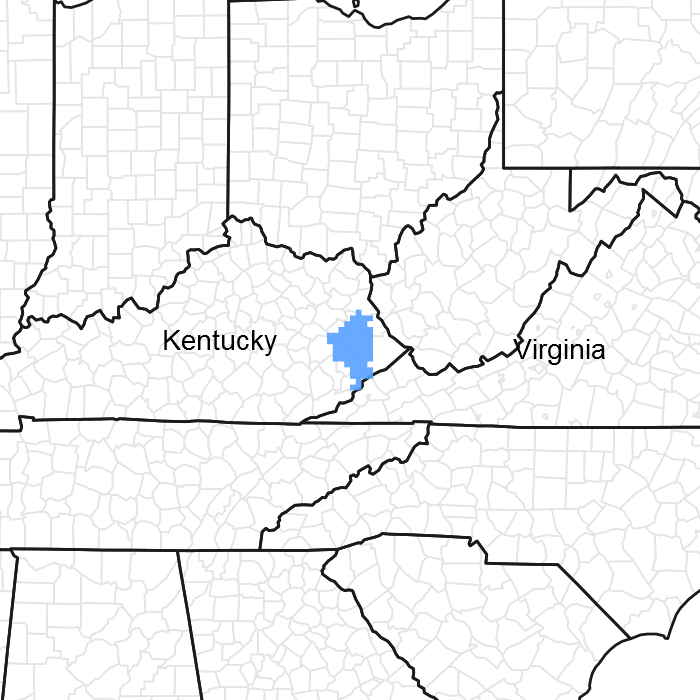
Natural Resources
Conservation Service
Ecological site F125XY001WV
Sandstone Residuum
Last updated: 5/13/2025
Accessed: 12/21/2025
General information
Provisional. A provisional ecological site description has undergone quality control and quality assurance review. It contains a working state and transition model and enough information to identify the ecological site.

Figure 1. Mapped extent
Areas shown in blue indicate the maximum mapped extent of this ecological site. Other ecological sites likely occur within the highlighted areas. It is also possible for this ecological site to occur outside of highlighted areas if detailed soil survey has not been completed or recently updated.
MLRA notes
Major Land Resource Area (MLRA): 125X–Cumberland Plateau and Mountains
MLRA 125 — Cumberland Plateau and Mountains
This area is in Kentucky (43 percent), Tennessee (25 percent), West Virginia (20 percent), Virginia (9 percent), and Alabama (3 percent). It makes up about 20,330 square miles (52,685 square kilometers). The towns of Logan, Madison, Welch, and Williamson, West Virginia, and Norton and Wise, Virginia, are in the northeastern part of this area. The towns of Middlesboro, Williamsburg, Corbin, London, Hazard, and Pikeville, Kentucky, and La Follette and Crossville, Tennessee, are in the area. Chattanooga, Tennessee, and Huntsville, Alabama, are just outside the southeast and southwest corners, respectively.
Interstates 24, 64/77, 75, and 40/75 cross this area. The Cumberland Gap National Historic Park is in the part of this area
along the Virginia and Kentucky border. The Daniel Boone and Jefferson National Forests occur in this area. Numerous State forests and parks are throughout the area (USDA-NRCS, 2006).
Classification relationships
This MLRA falls into the following Forest Service Sections: Northern Cumberland Mountains, Northern Cumberland Plateau. It falls into the following EPA Level III Ecoregions: Central Appalachians, Southwestern Appalachians, Central Appalachians (USDA-NRCS, 2006).
Ecological site concept
The Cumberland Plateau is a large, flat-topped tableland characterized by rugged terrain, a moderate climate, and abundant rainfall (National Park Service, accessed 2017).
Soils on this Provisional Ecological Site (PES) are shallow to very deep, Well drained to Excessively drained, and Very slow to Rapid permeable soils, with very acidic to strongly acidic soil reaction, that formed in Residuum from Interbedded sedimentary rock, Quartzite, Sandstone, Sandstone and shale, Sandstone and siltstone, Shale and siltstone. All of this MLRA falls into the mesic temperature regime.
This PES is largely forested, although some pasture does occur. It is characterized by dry hardwood forests dominated by oak, on predominately acidic substrates. Disturbance plays an important role in vegetation dynamics on this site; fire (both human-caused and natural) and forestry are very important.
Associated sites
| F125XY002WV |
Interbedded Sedimentary Colluvium |
|---|---|
| F125XY003WV |
Interbedded Sedimentary Uplands |
| F125XY004WV |
Floodplain Alluvium |
| F125XY005WV |
Low Stream Terrace Alluvium |
Similar sites
| F125XY002WV |
Interbedded Sedimentary Colluvium |
|---|
Table 1. Dominant plant species
| Tree |
(1) Quercus alba |
|---|---|
| Shrub |
(1) Vaccinium |
| Herbaceous |
Not specified |
Click on box and path labels to scroll to the respective text.


